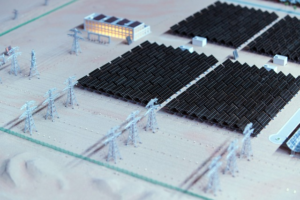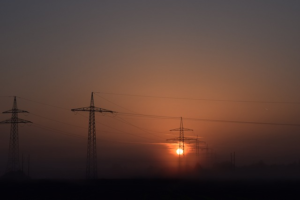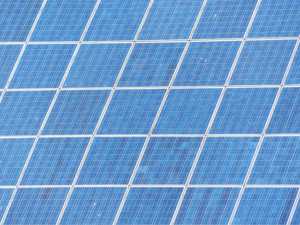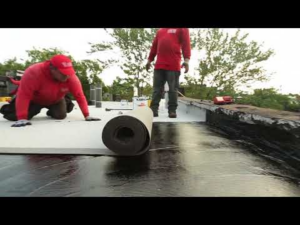
How do you bottle renewable energy for when the Sun doesn’t shine and the wind won’t blow? That’s one of the most vexing questions standing in the way of a greener electrical grid. Massive battery banks are one answer. But they’re expensive and best at storing energy for a few hours, not for days long stretches of cloudy weather or calm. Another strategy is to use surplus energy to heat a large mass of material to ultrahigh temperatures, then tap the energy as needed. This week, researchers report a major improvement in a key part of that scheme: a device for turning the stored heat back into electricity.
A team at the Massachusetts Institute of Technology (MIT) and the National Renewable Energy Laboratory achieved a nearly 30% jump in the efficiency of a thermophotovoltaic (TPV), a semiconductor structure that converts photons emitted from a heat source to electricity, just as a solar cell transforms sunlight into power. “This is very exciting stuff,” says Andrej Lenert, a materials engineer at the University of Michigan, Ann Arbor. “This is the first time [TPVs have] gotten into really promising efficiency ranges, which is ultimately what matters for a lot of applications.” Together with related advances, he and others say, the new work gives a major boost to efforts to roll out thermal batteries on a large scale, as cheap backup for renewable power systems.
The idea is to feed surplus wind or solar electricity to a heating element, which boosts the temperature of a liquid metal bath or a graphite block to several thousand degrees. The heat can be turned back into electricity by making steam that drives a turbine, but there are trade-offs. High temperatures raise the conversion efficiency, but turbine materials begin to break down at about 1500°C. TPVs offer an alternative: Funnel the stored heat to a metal film or filament, setting it aglow like the tungsten wire in an incandescent light bulb, then use TPVs to absorb the emitted light and turn it to electricity.
When the first TPVs were invented in the 1960s, they only converted a few percent of the heat energy into electricity. That efficiency jumped to about 30% in 1980, where it has largely been stuck ever since. One reason is that tungsten and other metals tend to radiate photons across a broad spectrum, from high-energy ultraviolet to low-energy far-infrared. But all photovoltaics—TPVs included—are optimized to absorb photons in a narrow range, meaning light with higher and lower frequencies tends to be wasted.
For the new device, Asegun Henry, an MIT mechanical engineer, tinkered with both the emitter and the TPV itself. Previous TPV setups heated the emitters to about 1400°C, which maximized their brightness in the wavelength range for which TPVs were optimized. Henry aimed to push the temperature 1000°C higher, where tungsten emits more photons at higher energies, which could improve the energy conversion. But that meant reworking the TPVs as …….






